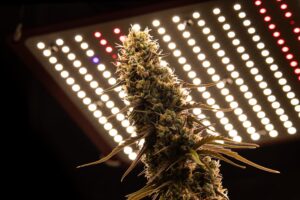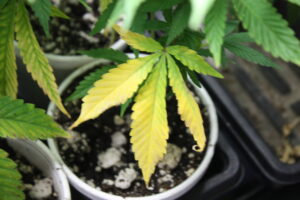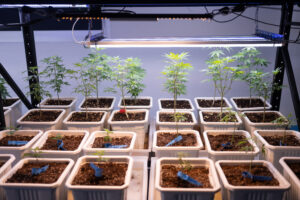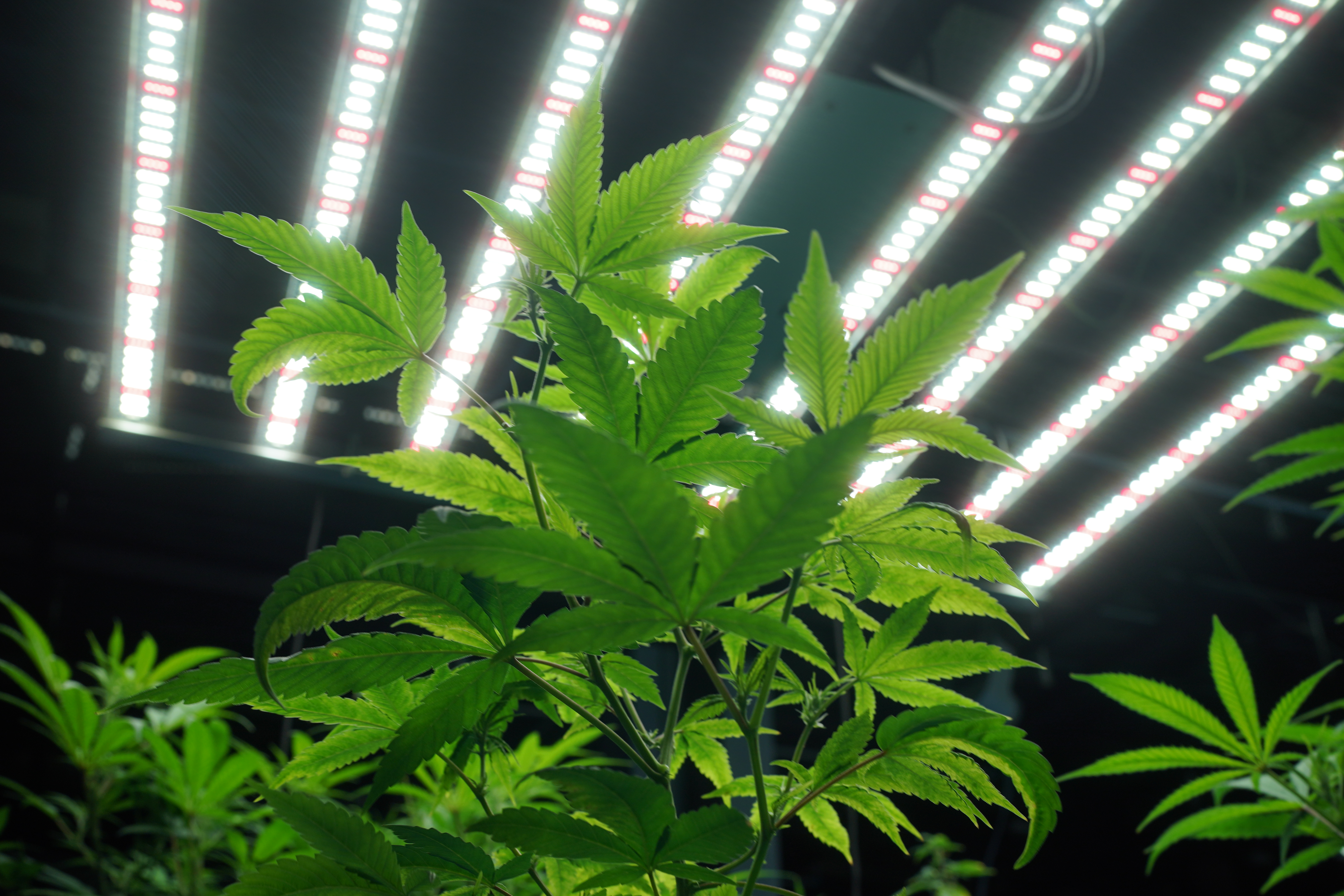
Ever felt the pure joy of basking in a sunbeam, much like a cat on a windowsill? Your plants feel the same way, but for them, it’s more than just a pleasant warmth—it’s life. Through the magic of photosynthesis, they transform light into energy. As indoor gardeners, our mission is to replicate this essential sunlight with artificial lights. But how do we mimic the sun’s brilliance effectively?
In this guide, we’ll explore the essentials of plant lighting, from understanding light spectrums to choosing the best grow lights. Whether you’re turning your living room into a lush jungle or just want a thriving herb garden, mastering plant lighting is key. Let’s dive into the world of light and learn how to create the perfect environment for your plants to thrive!
Table of Contents
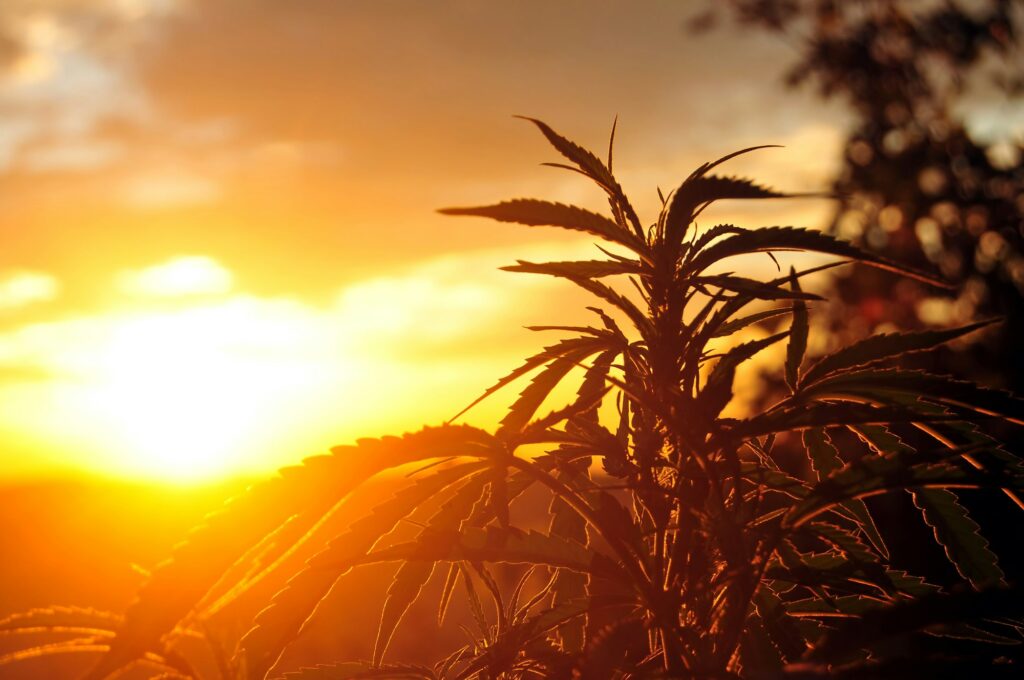
The Science of Sunshine and Shadows
Photosynthesis and Plant Growth
Imagine, if you will, a bustling city within each leaf, where the sun’s rays fuel an endless hustle and bustle. This city’s currency is energy, produced in the green factories known as chloroplasts. Here, light, carbon dioxide, and water are transformed into glucose and oxygen through a process that’s a bit like cooking – let’s call it “solar-powered baking.” The recipe? Just add sunlight! Photosynthesis, this marvel of nature, is how plants feed themselves and grow, turning sunlight into the energy that fuels their growth.
But the plot thickens with photoperiodism, a fancy term for how plants use light to tell time. It’s like they have their own biological clock, influenced by the length of day and night, dictating when they flower, shed leaves, or hibernate. And then there’s photomorphogenesis – essentially, how plants use light as cues to shape up, quite literally. Light quality, direction, and duration play the role of a gym instructor, guiding plant structure and growth patterns.
Light’s Leading Roles in the Green Theater
- Photosynthesis: The star of the show, where light is the main ingredient for the plant’s food and oxygen production.
- Photoperiodism: The timekeeper, influences when plants flower and enter different life stages.
- Photomorphogenesis: The personal trainer, shaping how plants grow and develop.
In the world of indoor gardening, we become the directors of this green theater, choosing the right lights to ensure the show goes on brilliantly. By understanding these fundamental processes, we can create optimal conditions for our plant performers, ensuring they’re always ready for their standing ovation.

The Light Spectrum: A Rainbow of Growth Opportunities
Plants have a more complex relationship with light than just basking in the sunshine. They’re picky eaters when it comes to light, thriving on a specific menu of colors from the light spectrum. Let’s break down this spectrum, shall we? Picture it as nature’s own light show, where each color plays a unique role in the backstage drama of plant growth.
The Colorful Cast of the Spectrum
- Blue Light (400-500 nm): Picture blue light as the strict, yet nurturing, music teacher guiding the early stages of plant growth. Essential for vegetative growth, blue light encourages strong stems and vibrant green leaves. It’s like the scales and arpeggios in music, foundational for the plant’s development, ensuring they’re robust and well-prepared for their flowering finale.
- Red Light (600-700 nm): Now, imagine red light as the passionate conductor, cueing the plants to enter the grand phase of flowering and fruiting. This wavelength encourages blooms and harvests, playing a critical role in a plant’s reproductive cycle. It’s the crescendo in a piece of music, leading to the climax of growth.
- Far-Red Light (700-800 nm): Far-red light is the enigmatic backstage manager, subtly influencing growth processes like the stretching of stems and the timing of flowering. Though less involved in the photosynthetic process, its presence can signal plants to undertake specific growth strategies, akin to the subtle yet impactful bassline in a song.
- Green Light (500-600 nm): Green light, often overlooked like an understudy, actually plays a crucial role backstage. It penetrates deeper into the foliage than other colors, reaching parts of the plant that others can’t. Think of it as the harmony that supports the melody, not the main attraction but essential for the fullness of the performance.
Harnessing the Spectrum for Indoor Gardening
Understanding this spectrum allows us, as indoor gardeners, to play maestro with grow lights. By selecting the right light colors, we can steer our plants through their life stages with precision. Want to boost vegetative growth? Blue light’s your best friend. Aiming for an indoor Eden of flowers and fruits? Cue the red light.
This colorful guide to the light spectrum not only adds a layer of depth to our gardening practice but also empowers us to create environments that mimic the natural world’s nuanced light conditions. As we harness the spectrum, we’re not just gardeners; we’re light composers, orchestrating a symphony of growth for our indoor plants.
Shifting our focus to the spotlight, or rather, grow lights, let’s explore the diverse cast of characters in the world of plant lighting. Each type of grow light plays a unique role in the indoor garden stage, offering different benefits to ensure your plants not only survive but thrive under your care. As we navigate through this section, we’ll keep the tone light-hearted and informative, ensuring you get to know the ins and outs of each grow light option.

Shedding Light on Lights: The Who’s Who of Grow Lights
The quest for the perfect indoor garden is much like casting for a blockbuster movie. Each grow light type brings its own flair to the production, ensuring that every plant in your care gets the spotlight it deserves. Let’s meet the stars:
Fluorescent Lights: The Versatile Supporting Actors
Think of fluorescent lights as the reliable sidekicks in our garden saga. Compact Fluorescent Lamps (CFLs) and T5 or T8 tubes don’t hog the limelight but provide steady, broad-spectrum light that’s perfect for seedlings and plants that prefer low to medium light. Like the best-supporting actors, they’re versatile, cost-effective, and excellent at setting the stage for growth without the drama of high energy bills.
HID (High-Intensity Discharge) Lights: The Intense Lead Performers
HID lights, encompassing Metal Halide (MH) and High-Pressure Sodium (HPS) lamps, are the A-listers known for their powerful performance. MH lights shine in the vegetative stage with their cool, blue light, while HPS lamps take the lead in the flowering phase with their warm, red spectrum. They’re the go-to for growers looking for high-intensity light that drives robust growth, albeit with a bit more heat and energy consumption.
LED (Light Emitting Diodes): The Innovative New Stars
LEDs are the rising stars in the grow light world, beloved for their energy efficiency and longevity. They’re versatile, and capable of providing a full spectrum of light tailored to your plants’ needs at every stage of growth. With LEDs, you can play director, adjusting the light spectrum to cue your plants’ performance from seed to harvest. They run cooler than their counterparts, making them an excellent choice for the environmentally conscious gardener.
LEC (Light Emitting Ceramic): The Critics’ Choice for Natural Lighting
Also known as Ceramic Metal Halide (CMH) lights, LECs are praised for their ability to mimic natural sunlight. They provide a broad spectrum of light, including beneficial UV rays that promote stronger plant structures and potentially higher yields. LECs are efficient, long-lasting, and a favorite among those looking for a balance between performance and energy use, earning rave reviews from plants and gardeners alike.
Choosing the right grow light for your indoor garden is a critical decision, akin to casting the lead role in a play. By understanding the strengths and quirks of each option, you can create a lighting setup that ensures your plants not only grow but truly flourish under your care.
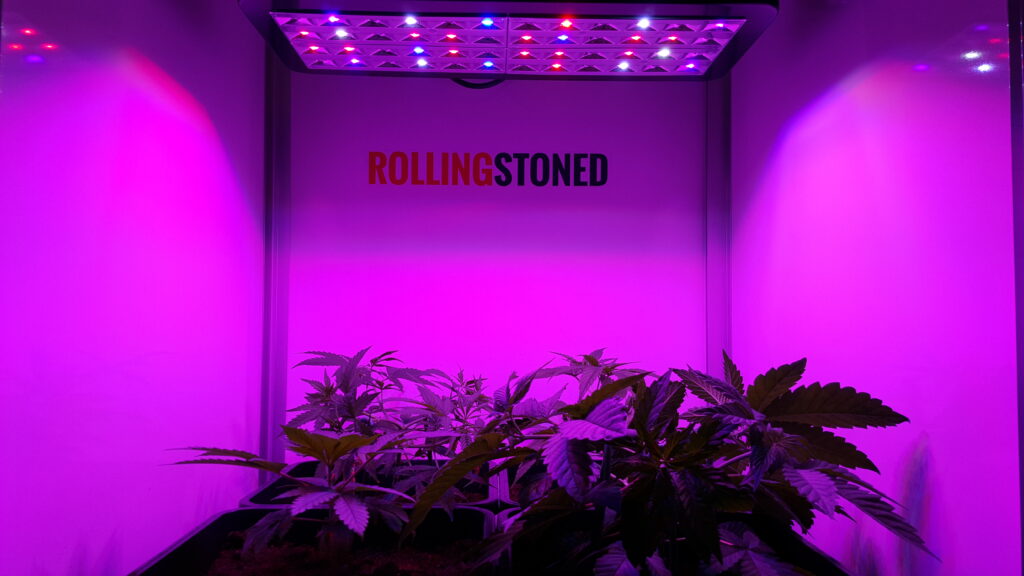
Tailoring Light to Plant Needs: Creating the Perfect Ambiance
Every plant has its own light preferences, much like how we have our favorite genres of music. Some bask in the bright spotlight of high intensity, while others thrive in the gentle glow of a softer luminescence. Understanding these preferences is key to orchestrating the ideal conditions for your indoor garden.
High Light Plants: The Sun Worshipers
Highlight plants are the divas of the plant world, craving the spotlight with a passion. These include many flowering plants, fruits, and vegetables, such as tomatoes, peppers, and roses. They flourish under direct sunlight or its artificial equivalent for 6 or more hours a day. In the indoor setting, this translates to positioning these plants under grow lights that can mimic the intensity of the midday sun, ensuring they receive their daily dose of high-energy rays.
Medium Light Plants: The Moderates
Medium-light plants prefer the balance of a well-lit studio, bright but without the harsh glare of direct sunlight. These are your ferns, dracaenas, and some orchids that perform best with 3-6 hours of direct sunlight or its equivalent. They appreciate a setup that offers bright, indirect light, perhaps a little distance from the grow light or filtered through a sheer curtain, mimicking the dappled sunlight of their natural habitats.
Low Light Plants: The Shade Seekers
Low-light plants are the cool characters of the garden, perfectly content in the shadows. These are often foliage plants, such as the pothos, ZZ plant, and peace lily, thriving in less than 3 hours of direct sunlight or in shaded locations. In the indoor garden, they require minimal light, often thriving with just ambient light or positioned further away from the main light source. These plants remind us that sometimes, less is more.
Setting the Stage: Light Intensity and Duration
Creating the perfect ambiance doesn’t stop at choosing the right type of light. The intensity and duration of exposure are like the volume and length of a song, setting the mood and influencing the plant’s growth rhythm.
- Intensity: Adjust the brightness of your grow lights based on your plant’s needs. Use a dimmer for high-light plants to mimic the sun’s intensity, while lower settings or positioning the light further away can cater to medium and low-light plants.
- Duration: Use timers to control the photoperiod, ensuring your plants receive the right amount of light each day. This can range from 12-16 hours for high-light plants to as little as 8-10 hours for low-light varieties.
By tuning into your plants’ needs and adjusting the lighting conditions accordingly, you’re not just growing plants; you’re cultivating a thriving indoor ecosystem. It’s a delicate dance of light and shadow, where each adjustment brings your garden closer to its full potential.
Navigating the world of plant lighting involves not just understanding the needs of your green friends but also being able to measure and manage those needs accurately. Let’s delve into the tools of the trade that help us quantify the light our plants receive, ensuring we’re hitting the sweet spot between too little and too much.
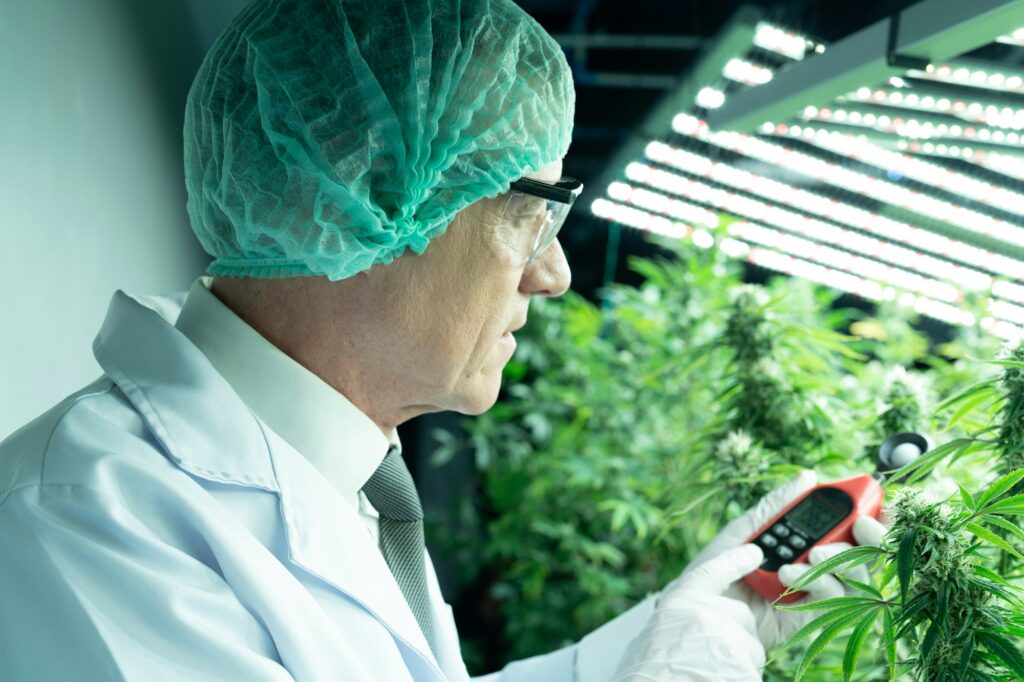
Measuring and Managing Plant Lighting Needs: The Tools of the Trade
To cultivate a thriving indoor garden, it’s essential to speak the language of light. This means getting familiar with how light is measured and how these measurements apply to your plants. Let’s unpack the essentials.
Lux/Lumens: The Human Perspective
Lux and lumens measure the intensity of light as perceived by the human eye. While they offer a general idea of how bright an environment is, they don’t fully account for the spectrum of light plants use for photosynthesis. However, they’re a good starting point for beginners to understand the concept of light intensity.
PAR (Photosynthetically Active Radiation): The Plant’s Perspective
PAR represents the range of light (400-700 nm) that plants can use for photosynthesis. It’s like the plant’s version of visible light, encompassing the wavelengths that really matter for growth. Knowing the PAR output of your grow lights helps ensure you’re providing enough of the right kind of light.
PPFD (Photosynthetic Photon Flux Density): The Precision Measurement
PPFD measures the amount of PAR that actually reaches your plants, expressed in micromoles per square meter per second (μmol/m²/s). It gives a precise understanding of how much usable light your plants are receiving in their specific location under the grow light. This measurement is crucial for optimizing light intensity and distribution to match your plants’ needs.
Practical Steps to Managing Light:
- Use a Light Meter: Invest in a light meter that can measure lux/lumens for a basic understanding, or better yet, one that measures PAR or PPFD for a detailed view of what your plants are getting.
- Adjusting Light Intensity: Use the information from your light meter to adjust the height and intensity of your grow lights. Plants not getting enough light may need the source moved closer, while signs of too much light (e.g., leaf burn) mean it’s time to dial it back or raise the light.
- Monitoring and Adjusting Duration: Use timers to control how long your plants are exposed to light each day, simulating natural day-night cycles. This is particularly important for managing photoperiod-sensitive plants.
By becoming adept at measuring and managing light, you’re equipped to provide your indoor garden with just the right amount of sunshine, no matter the weather outside. It’s about creating a controlled slice of the great outdoors, where every plant can bask in its ideal conditions.
As we bring our comprehensive guide on plant lighting to a close, let’s recap the illuminating journey we’ve embarked on and chart the path forward for our indoor gardening adventures. With newfound knowledge and insights, the quest to create the perfect indoor garden is more achievable and exciting than ever.

Conclusion: Lighting the Way Forward in Indoor Gardening
Embarking on the indoor gardening journey is akin to becoming a steward of light, guiding your plants through their lifecycle with the glow of knowledge and the sparkle of care. From understanding the critical role of light in photosynthesis to mastering the spectrum for optimal growth, we’ve explored how to emulate the sun’s embrace within our homes and greenhouses. By choosing the right grow lights and tailoring lighting conditions to the specific needs of our plant companions, we ensure their health, vitality, and productivity.
The Key Takeaways:
- The Science of Light: Light isn’t just brightness; it’s the energy and signal plants use to grow, flower, and thrive. Understanding photosynthesis, photoperiodism, and photomorphogenesis allows us to support our plants better.
- Spectrum Mastery: Each color of light plays a unique role in plant development. By harnessing the full spectrum, we can encourage strong vegetative growth, prolific flowering, and overall plant health.
- Choosing Grow Lights: Whether it’s the versatility of fluorescent lights, the intensity of HID lamps, the efficiency of LEDs, or the natural mimicry of LECs, selecting the right grow light sets the stage for success.
- Measuring and Managing: Tools like lux/lumens, PAR, and PPFD meters help us quantify light, ensuring our plants receive just the right amount. Combined with strategies for harnessing natural light, we can create a balanced environment that mimics the great outdoors.
Cultivate Your Light Garden
Armed with these insights, the path forward is bright. Experiment with different lighting setups, observe your plants’ responses and adjust as needed. Remember, gardening is as much about learning and adapting as it is about caring and nurturing.
We invite you to share your light gardening journey with the Bud Wize community. Whether it’s a triumph in tweaking your grow lights for that perfect bloom or a learning moment in balancing natural and artificial light, your stories enrich our collective experience and knowledge.
Keep Growing, Keep Glowing
Mastering plant lighting is a cornerstone of successful cannabis cultivation, playing a critical role in plant growth, health, and yield. The right lighting can make all the difference, from seedling development to flowering. By understanding the various types of lights and their applications, growers can optimize their setups for the best possible outcomes.
For those looking to elevate their grow game further, explore our comprehensive guide on Advanced Lighting Techniques & Tips. This article dives deeper into specialized lighting strategies, offering expert advice on maximizing light efficiency and boosting plant performance.
Additional Resources:
- Grow That Sh!t Better by Maximus Reigns – An essential eBook for both novice and experienced growers, offering advanced techniques and tips for improving cannabis cultivation.
- Grow Lighting 101: A Guide to Indoor Grow Lights – An online resource that provides a comprehensive overview of different grow light options and their benefits.
- Royal Queen Seeds: Lighting for Cannabis – A helpful guide discussing the importance of proper lighting and how to set up an optimal lighting system.
- Need Cannabis Seeds? – Seedsman Seeds has a variety of seeds for all growers from new and seasoned to medical and CBD users.
These resources offer valuable insights and practical advice for optimizing your grow lights, ensuring your cannabis plants receive the ideal light spectrum and intensity they need to thrive. Whether you’re just starting or looking to refine your techniques, these guides will help you achieve superior results in your grow space.
